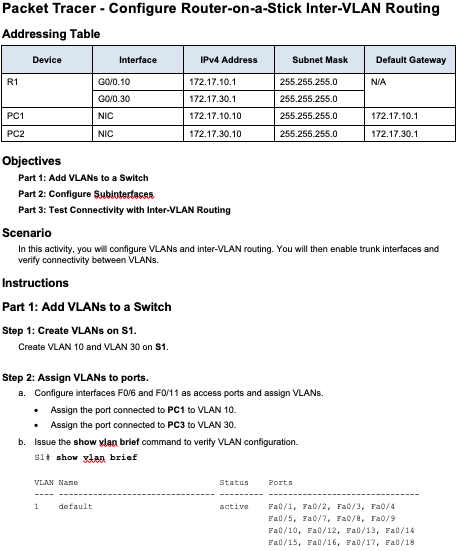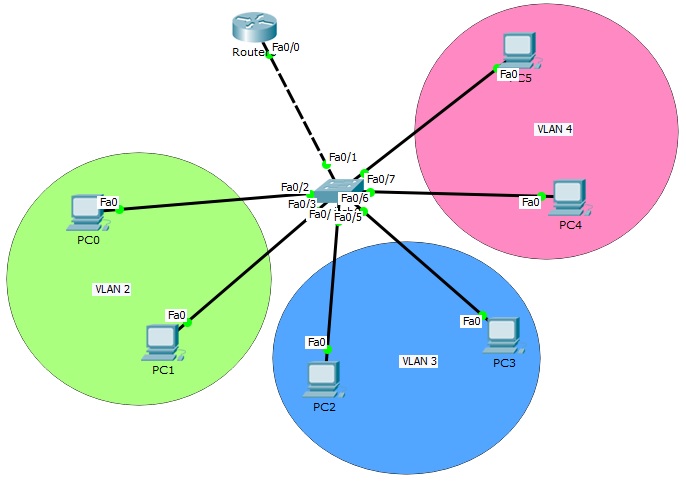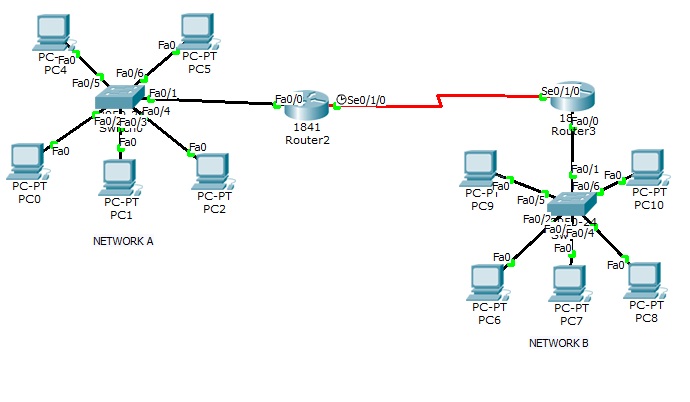

- #Enable router on a stick how to#
- #Enable router on a stick upgrade#
- #Enable router on a stick verification#
This topic details how to configure router-on-a-stick inter-VLAN routing. In the previous topic, three different ways to create inter-VLAN routing were listed, and legacy inter-VLAN routing was detailed. Lab – Configure Router-on-a-Stick Inter-VLAN Routing.Packet Tracer – Configure Router-on-a-Stick Inter-VLAN Routing.
#Enable router on a stick verification#
Router-on-a-Stick Inter-VLAN Routing Verification.Verify Connectivity Between PC1 and PC2.Finally, go to Network -> Static Routes and add a route for the switch's management interface for example, if my switch had a static IP of 192.168.10.1, i'd create a static route for 192.168.10.0/24 on interface VLAN 1 / eth0.1. Do this for your LAN and WAN networks, and also create a separate interface for VLAN 1 (eth0.1) so that you can access the managed switch itself later if needed. Select the appropriate protocol and enter a custom interface name in the form of eth0.VLANID, e.g. To add new VLAN interfaces in OpenWRT, go to Network -> Interfaces and click "Add New Interface". Simply flash the image to your microSD card as you would anything else, and your Pi 4 should be booting OpenWRT before too long. However, thanks to the wonderful work of a user on the OpenWRT forums by the name of wulfy23 there is a wonderful community build available. On the Zyxel with port 1 reserved for the Pi, port 8 reserved for the WAN device, and remaining ports as LAN, this would look like the following: Setting up the Raspberry Pi 4Īs of this writing, there is no stable OpenWRT release for the Pi 4 yet, only snapshots. Generally, you should set up your switch ports as follows: one port for the Raspberry Pi (a "trunk" port tagged on all VLANs), one port for your WAN interface (untagged with the default VLAN/PVID set to 10) and the remaining ports on your switch untagged with the default VLAN/PVID set to 100. Once you've chosen your VLAN IDs, you'll need to configure your managed switch. For the purposes of this guide we'll assign our WAN to VLAN 10 and LAN to VLAN 100. Most managed switches reserve VLAN 1 for their management interface, so you should avoid that. Any two unique numbers between will do, but choose something sane, e.g. Defining the same WAN and LAN VLANs on the Pi 4's OpenWRT interfaceįirst decide what IDs you'd like to use for the WAN and LAN VLANs.Installing OpenWRT on the Rasberry Pi 4.Defining separate WAN and LAN VLANs on the managed switch.ConfigurationĮssentially, getting everything working boils down to the following: In my case, I wanted PoE to minimize the need for adapters and wires as I already had a PoE-capable Ubiquiti wireless access point. I decided to go with the Zyxel GS1200-8HP, an eight-port model with four PoE ports and a basic web interface suitable for home/small business use.

If you want to get a bit fancier and don't mind shelling out a bit more, you can pick up a model that also has Power over Ethernet (PoE) support that can additionally be used to power the Raspberry Pi 4 itself, in conjunction with a PoE HAT or an external PoE to USB-C converter.


As the Pi 4's Cortex-A72 cores are sufficiently powerful to route the gigabit speeds achievable by the BCM54213PE NIC, you're not really losing out on any performance by doing this.Īny managed 802.1q VLAN-supporting switch will do fine, and these start at around $20-30 for a basic five-port or eight-port model. the two separate LAN and WAN ports on a regular multi-port consumer router) are logically multiplexed onto a single physical interface. a router-on-a-stick configuration where multiple ethernet interfaces (e.g. Instead, it's perfectly possible to make do with the Pi 4's single built-in Ethernet port using 802.1q VLANs and the aid of a managed switch, i.e. "But it only has one Ethernet port!" While many people end up adding USB 3.0-based gigabit Ethernet adapters to their Pi 4, I've never been a fan of USB-based Ethernet adapters - they just seem so informal and temporary.
#Enable router on a stick upgrade#
With the advent of this latter upgrade (compared to the Raspberry Pi 3's gigabit NIC hamstrung to about 300 Mbps by its USB 2.0 connection to the CPU) the Raspberry Pi 4 is now much a more more viable platform for a router. When the Raspberry Pi 4 was released in June 2019, it represented a huge generational performance jump from its predecessor - a substantially beefier BCM2711 quad core Cortex-A72 CPU, USB 3.0, as much as 8GB of RAM, and native Broadcom gigabit Ethernet.


 0 kommentar(er)
0 kommentar(er)
